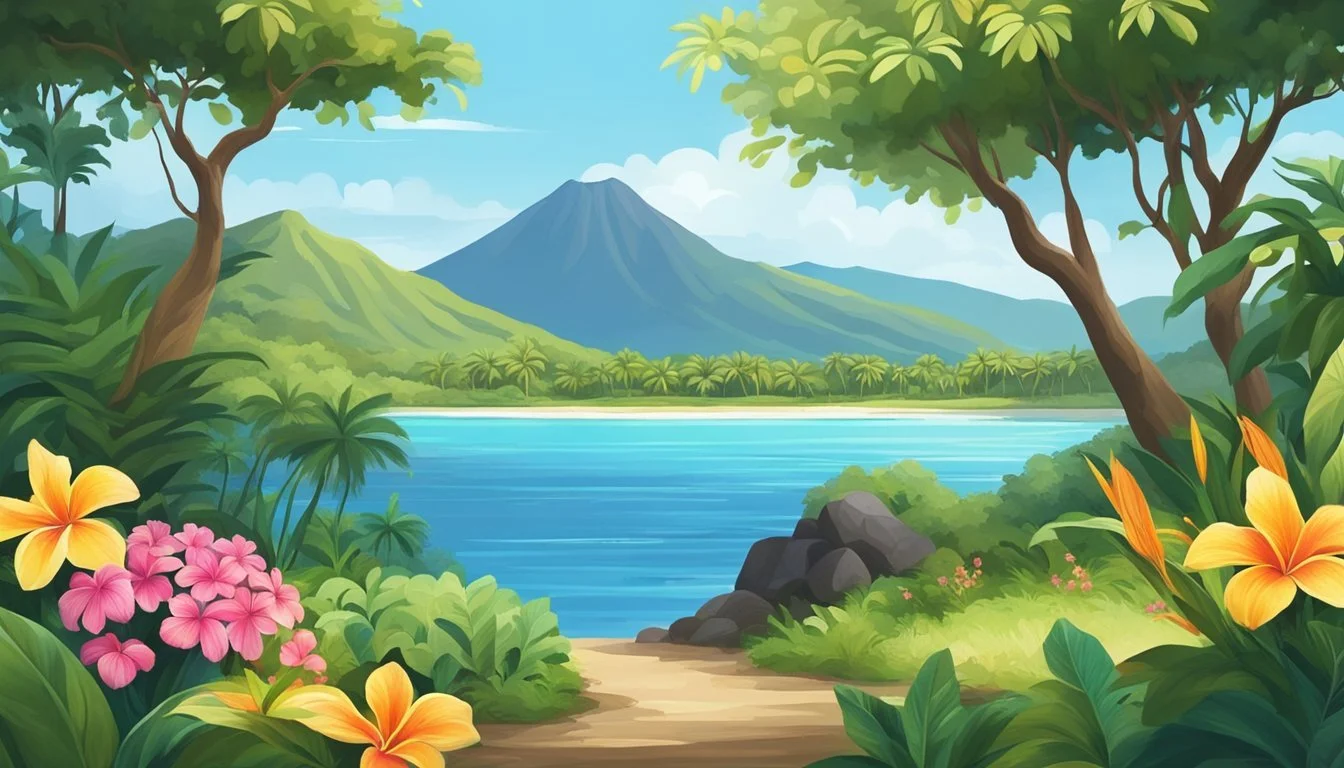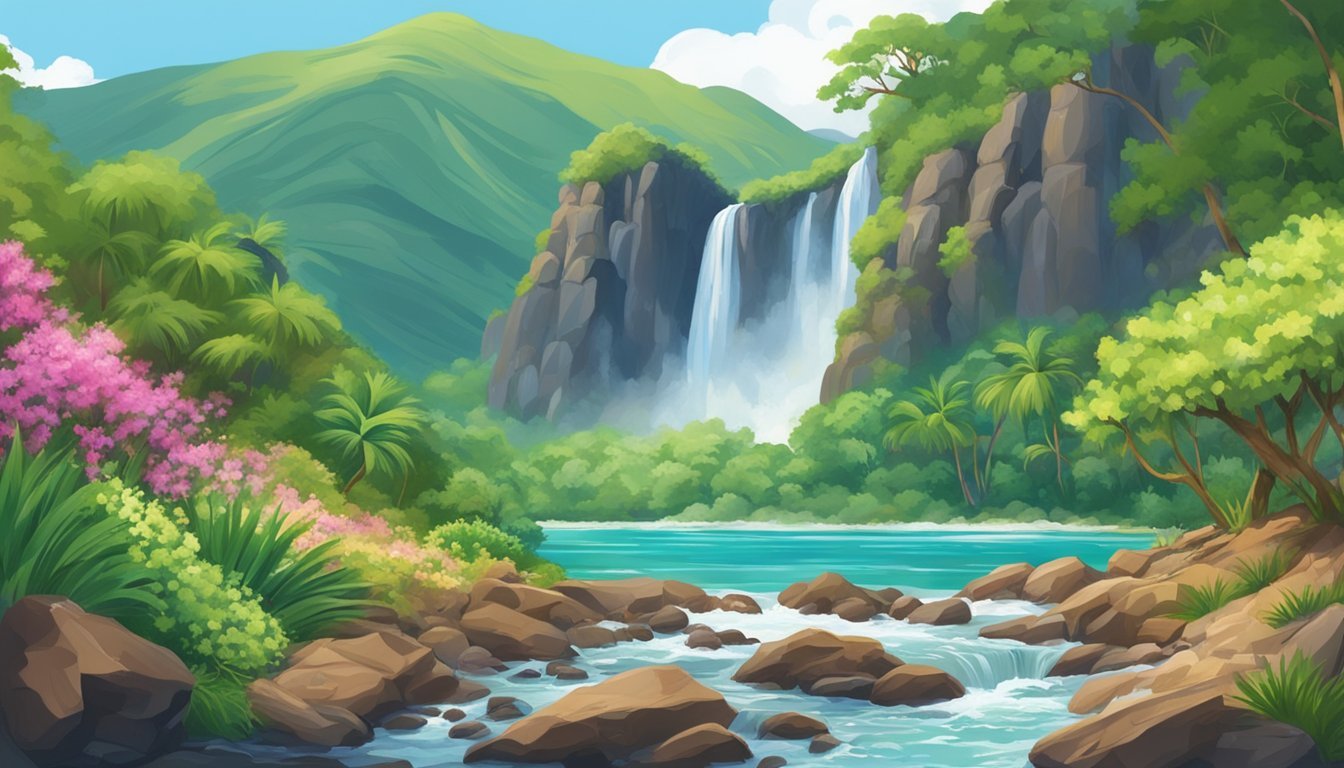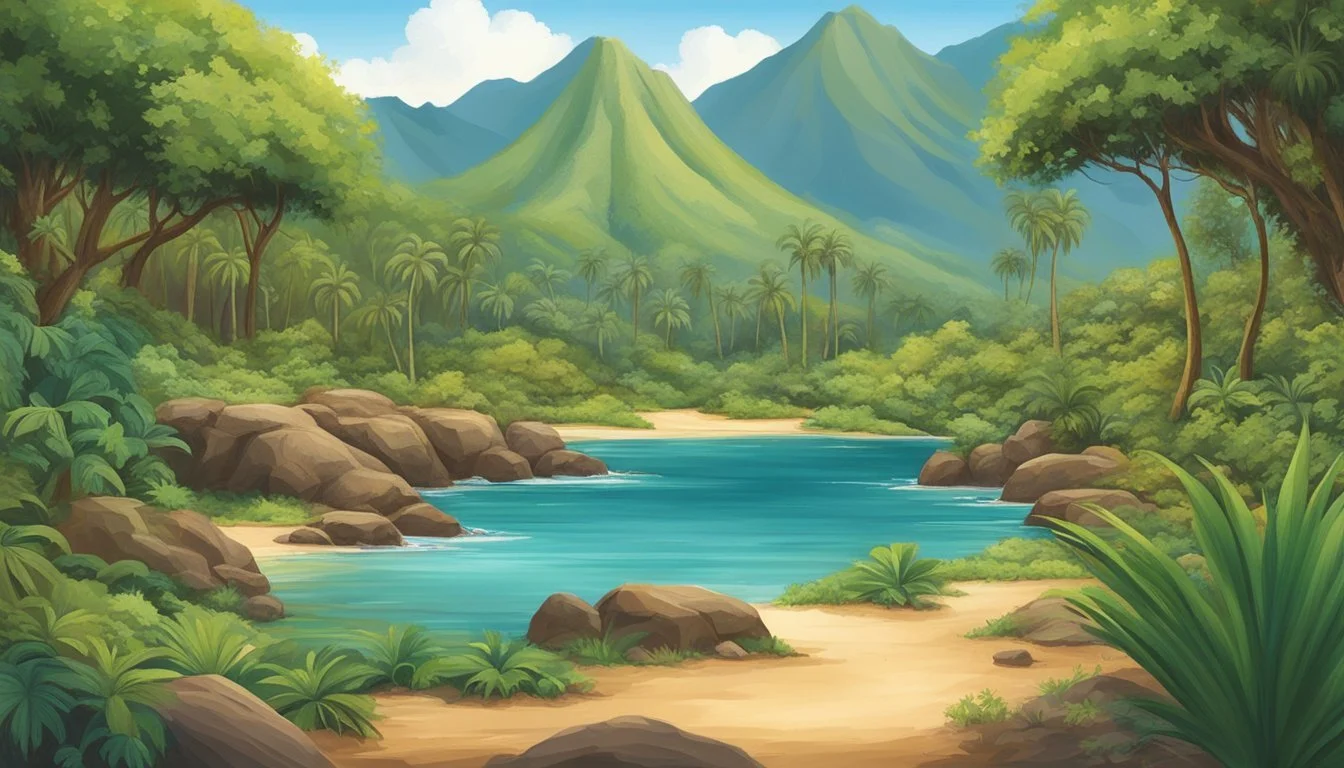Hawaiian Springs vs. Ramona
An Unbiased Bottled Water Comparison
When it comes to bottled water, Hawaiian Springs and Ramona are two brands that often come up in discussions. Both have unique features that appeal to different people based on taste, origin, and packaging. Hawaiian Springs is sourced from the pristine aquifers of Hawaii, known for its refreshing and clean taste. Ramona, a California spring water, presents a different profile.
Hawaiian Springs stands out with its crisp, pure flavor that many find to be exceptionally refreshing. Ramona, on the other hand, has received mixed reviews due to a noticeable plastic-like taste linked to its packaging. Such differences can significantly influence one’s preference for daily hydration or special occasions.
The market of bottled water is crowded, but understanding the unique qualities of Hawaiian Springs and Ramona helps consumers make informed choices. With Hawaiian Springs offering a natural, high-quality sipping experience and Ramona presenting affordability despite taste concerns, each brand caters to distinct needs and preferences.
Exploring the Concept of Bottled Water
Bottled water has become an integral part of modern life, with a diverse array of brands catering to various consumer needs. Understanding its origins, landscape, and health aspects provides valuable insights for choosing the right water.
Definition and Emergence of Bottled Water
Bottled water refers to water packaged in plastic or glass bottles for consumer convenience. Its origins trace back to the early 18th century when medicinal springs were first bottled for drinking.
By the late 20th century, bottled water gained immense popularity due to growing health consciousness and concerns over tap water quality. Today, it represents a multi-billion dollar industry with widespread global consumption.
Bottled Water Brands Landscape
The market hosts a vast array of bottled water brands, each vying for consumer preference. They range from budget options like Nestle Pure Life to premium choices such as Mountain Valley spring water.
Brands differentiate themselves based on source, taste, mineral content, and purity. Factors like the bottling process, water source reliability, and packaging also play crucial roles in brand perception.
Health and Hydration: Understanding the Basics
Hydration is essential for overall health, and bottled water provides a convenient solution. It’s important to note that not all bottled waters are created equal.
Some brands offer mineral-rich options that can support bodily functions, while others focus on purified water free from additives. Consumers should check labels for information on mineral content and source to make informed choices about their hydration needs.
Deconstructing Hawaiian Springs and Ramona
Hawaiian Springs and Ramona are notable brands, both vying for the top spot in bottled spring water. This section looks into their origins, production processes, and packaging to give readers a clear comparison.
Brand Origins: Hawaiian Springs and Ramona
Hawaiian Springs sources its water from the slopes of Mauna Loa on the Big Island of Hawaii. Established in 1995, the brand markets its water as naturally filtered through volcanic rock, creating a pristine and pure product. Ramona, founded in California, sources its spring water from local artesian springs. This brand emphasizes its long-standing heritage and connection to the natural springs of Southern California.
Production Process: Source to Bottle
Hawaiian Springs captures its water directly from natural springs found on Mauna Loa. The water is filtered naturally through the volcanic rock, which enhances its mineral content without the need for added chemicals. Ramona’s production involves sourcing water from artesian wells. Both brands use modern bottling facilities to ensure safety and maintain the water's natural qualities, but Hawaiian Springs often highlights their minimal processing to retain natural minerals.
Bottle Packaging: Convenience and Environment
The brands differ in their approach to packaging. Hawaiian Springs uses PET plastic and emphasizes recyclable materials, aiming to balance convenience with environmental responsibility. Ramona's packaging often involves glass bottles, catering to a more premium market and reducing plastic waste. Both companies face challenges and opportunities when addressing sustainability, each aiming to attract environmentally-conscious consumers.
Comparative Analysis of Water Quality
When comparing Hawaiian Springs and Ramona bottled water, it's important to look at several key factors: mineral content and its health implications, adherence to purity standards and their filtration processes, and the unique taste profiles each brand offers.
Mineral Content and Health Implications
Hawaiian Springs water is known for its natural artesian origins. It contains a balanced level of minerals, providing essential electrolytes such as calcium and magnesium. This can contribute positively to daily mineral intake.
Ramona water, while also consisting of essential minerals, undergoes a different mineral composition. The variance may affect the overall health benefits, depending on individual dietary needs. It's crucial to check the label for specific mineral counts to understand which suits your health preferences best.
Purity Standards and Filtration Processes
Hawaiian Springs prides itself on its natural filtration process. The water originates from an artesian aquifer, undergoes minimal processing, and retains its natural purity.
Ramona, on the other hand, utilizes a multi-step filtration system. This includes reverse osmosis and UV treatment, ensuring high levels of purification. Both processes meet federal and state standards but differ in approach, affecting their purity levels and how they promote their "pure life" branding.
Taste Profile: The Flavor of Purity
Hawaiian Springs offers a crisp, clean taste due to its balanced mineral content and minimal processing. The naturally occurring minerals add a subtle flavor that is often described as refreshing.
Ramona water also boasts a clean taste but differs due to its extensive filtration process. The taste can be slightly different as the water is stripped of impurities and minerals, then sometimes re-mineralized to ensure a consistent taste. Consumers often choose between these based on personal taste preferences for pure versus naturally mineralized water.
This detailed comparison of mineral content, purity standards, and taste profiles should help clarify the distinctions between Hawaiian Springs and Ramona bottled waters.
Environmental Impact and Sustainability
Hawaiian Springs and Ramona both have unique approaches to sustainability in their bottling practices. This section examines their eco-friendly methods and contrasts bottled water with tap water from an environmental perspective.
Eco-Friendly Practices in Bottling
Hawaiian Springs derives its water from natural artesian aquifers. These aquifers are naturally replenished, ensuring a sustainable water source. Moreover, they focus on environmentally friendly bottling practices. Hawaiian Springs uses recyclable plastic bottles, aiming to reduce waste and minimize their carbon footprint.
Ramona Natural Mountain Spring Water also emphasizes sustainability. They have implemented significant measures to improve their packaging materials and processing technologies. Although they have received a scorecard rating of D for some practices, their focus on reducing emissions and energy use is notable.
Both brands have made strides in sustainable packaging. Hawaiian Springs’ recyclable bottles and Ramona's planned switch to 100% recycled materials by 2022 are steps towards reducing plastic waste. These practices help mitigate the environmental impact of their bottled water.
The Bottled vs. Tap Water Debate
The environmental debate between bottled water and tap water remains heated. Bottled water, including Hawaiian Springs and Ramona, often results in significant plastic waste and energy consumption during production and transportation.
On the other hand, municipal tap water is generally more sustainable. Tap water systems use existing infrastructure, which reduces the need for additional packaging and transportation. Environmental impact studies, such as those focusing on cities like Barcelona, highlight the financial and environmental costs if entire populations were to switch to bottled water.
Consumers choosing tap water can help reduce plastic waste and energy consumption, promoting a more sustainable lifestyle. Therefore, while bottled water like Hawaiian Springs and Ramona might offer convenience and quality, the environmental toll remains a significant concern.
Consumer Experience and Brand Marketing
Examining Hawaiian Springs and Ramona highlights the distinct approaches both brands utilize for consumer satisfaction and market positioning. Key elements such as brand perception and strategic marketing campaigns play crucial roles in shaping consumer choices.
Brand Positioning and Consumer Perception
Hawaiian Springs markets itself as a premium water sourced from Hawaii, leveraging the island's exoticism and purity. This positioning appeals to consumers looking for high-quality, pristine hydration options. The brand's emphasis on its volcanic origins contributes to a unique perception of natural purity and health benefits.
Ramona, contrastingly, targets a broader market by emphasizing accessibility and affordability. Positioned as a mainstream, safe, and reliable option, Ramona often features in grocery stores and supermarkets, making it a convenient choice for everyday consumption. Their straightforward branding appeals to pragmatically-minded consumers prioritizing availability and cost-efficiency.
Hawaiian Springs:
Focus: Premium, Exotic
Perception: Pure, Healthful, Unique
Ramona:
Focus: Mainstream, Accessible
Perception: Reliable, Affordable, Convenient
The Role of Marketing in Brand Preference
Hawaiian Springs employs targeted, upscale marketing campaigns often found in high-end lifestyle magazines and health-conscious platforms. Collaborations with water sommeliers and influential wellness figures help establish credibility and desirability among affluent consumers willing to pay for premium hydration.
Ramona's marketing strategy is more pervasive and pragmatic. Engaging in widespread advertising in supermarkets, grocery stores, and mainstream media allows them to reach a diverse audience. The emphasis is on consistent quality at an affordable price, reinforcing the brand's reliability and convenience, which drives volume and profit.
Marketing Strategies:
Hawaiian Springs: High-End, Exclusive Collaborations
Ramona: Broad Reach, Mass Media
Both brands effectively adapt their marketing efforts to align with their respective consumer bases, driving brand loyalty and preference through distinct, tailored approaches.
Regulatory Landscape and Safety Standards
To ensure the safety of bottled water, regulatory bodies such as the FDA and EPA have established comprehensive guidelines and standards. These regulations cover various types of bottled water, ensuring consumer safety and maintaining quality.
Bottled Water Regulations by the FDA and EPA
The FDA and the EPA play crucial roles in regulating the bottled water industry in the United States. The FDA issues Standards of Identity for bottled water, which outline specific requirements for classifications like drinking, artesian, mineral, and spring water.
FDA Regulations:
Standards of Identity: Defines different types of bottled water.
Standards of Quality: Sets permissible levels of contaminants.
Good Manufacturing Practices (GMPs): Ensures sanitary processing and packaging.
The EPA regulates public water systems and sets standards for tap water. While the FDA regulates bottled water, it often adopts the EPA's standards to ensure consistency and safety.
EPA Regulations:
Maximum Contaminant Levels (MCLs): Ensures the safety of drinking water.
Water Quality Standards: Protects public health and the environment.
These regulations ensure that both Hawaiian Springs and Ramona adhere to high safety standards.
Safety Measures and Consumer Assurance
Bottled water companies must implement rigorous safety measures to comply with regulatory standards. They routinely test for contaminants and adhere to strict manufacturing practices.
Safety Measures:
Regular Testing: Periodic lab tests for contaminants like PFAS.
Sanitary Practices: Strict adherence to GMPs.
Consumers should look for certifications from reputable organizations. For example, Hawaiian Springs and Ramona often provide water quality reports and certifications to assure consumers of their commitment to safety.
Transparency about the water source, treatment methods, and contaminant levels is vital. Labeling must reflect accurate information, helping consumers make informed choices about their bottled water purchases.
The Verdict: Choosing the Right Bottled Water
When selecting between Hawaiian Springs and Ramona bottled waters, several key factors such as price, quality, and accessibility come into play. Each brand offers distinct advantages that might appeal to different preferences and needs.
Comparing Price, Quality, and Accessibility
Price: Ramona bottled water tends to be more wallet-friendly, often found at lower prices in common retail outlets. In contrast, Hawaiian Springs' premium quality and distinctive Hawaiian origin contribute to a higher price point.
Quality: Hawaiian Springs is renowned for its natural artesian source, high pH level of 7.7+, and alkalinity, making it a preferred choice for those seeking health benefits and pure taste. Ramona, though not as alkaline, offers reliable quality and is often praised for its clean taste.
Accessibility: Ramona is widely available, frequently stocked in major stores like those offering versatile water options. Hawaiian Springs, being a more premium product, is less commonly found and often limited to specialized retailers or online.
Final Thoughts on Hawaiian Springs vs. Ramona
Hawaiian Springs: Best for those who prioritize mineral-rich, alkaline water with a high pH level and are willing to invest in a premium product. Its origin from deep earth aquifers in Hawaii adds an exotic appeal.
Ramona: Ideal for budget-conscious consumers who seek consistent quality and easy accessibility. Though it doesn’t boast the extra benefits of high pH levels, it remains a reliable choice in the bottled water market, competing with brands like Coca-Cola's Smartwater and Nestlé Waters.
Choosing between the two depends on balancing cost, health benefits, and availability, ensuring you pick the water that best fits your needs.
More About Hawaiian Springs
Acqua Pana vs Hawaiian Springs: Which Bottled Water is Better?
Aqua Carpatica vs Hawaiian Springs: Which Bottled Water is Better?
Aquafina vs Hawaiian Springs: Which Bottled Water is Better?
Arrowhead vs Hawaiian Springs: Which Bottled Water is Better?
Boxed Water vs Hawaiian Springs: Which Bottled Water is Better?
Castle Rock vs Hawaiian Springs: Which Bottled Water is Better?
Core Hydration vs Hawaiian Springs: Which Bottled Water is Better?
Deer Park vs Hawaiian Springs: Which Bottled Water is Better?
Essentia vs Hawaiian Springs: Which Bottled Water is Better?
Hawaiian Springs vs 1907water: Which Bottled Water is Better?
Hawaiian Springs vs 7-Select: Which Bottled Water is Better?
Hawaiian Springs vs Alkaline88: Which Bottled Water is Better?
Hawaiian Springs vs Antipodes: Which Bottled Water is Better?
Hawaiian Springs vs Big Chill: Which Bottled Water is Better?
Hawaiian Springs vs BodyArmor: Which Bottled Water is Better?
Hawaiian Springs vs Cascade Mountain: Which Bottled Water is Better?
Hawaiian Springs vs CBD Living: Which Bottled Water is Better?
Hawaiian Springs vs Crystal Geyser: Which Bottled Water is Better?
Hawaiian Springs vs Crystal Lake: Which Bottled Water is Better?
Hawaiian Springs vs Essence pH10: Which Bottled Water is Better?
Hawaiian Springs vs Hawaii Volcanic: Which Bottled Water is Better?
Hawaiian Springs vs Kirkland Signature: Which Bottled Water is Better?
Hawaiian Springs vs Liquid Death: Which Bottled Water is Better?
Hawaiian Springs vs Mananalu: Which Bottled Water is Better?
Hawaiian Springs vs Open Water: Which Bottled Water is Better?
Hawaiian Springs vs Proud Source: Which Bottled Water is Better?
Hawaiian Springs vs Pure Life: Which Bottled Water is Better?
Hawaiian Springs vs Purely Sedona: Which Bottled Water is Better?
Hawaiian Springs vs Refreshe: Which Bottled Water is Better?
Hawaiian Springs vs Richard's Rainwater: Which Bottled Water is Better?
Hawaiian Springs vs Simple Truth: Which Bottled Water is Better?
Hawaiian Springs vs Solan de Cabras: Which Bottled Water is Better?
Hawaiian Springs vs Talking Rain AQA: Which Bottled Water is Better?
Hawaiian Springs vs The Well: Which Bottled Water is Better?
Hawaiian Springs vs Tru Alka: Which Bottled Water is Better?
Hawaiian Springs vs Weird Water: Which Bottled Water is Better?
Hawaiian Springs vs Whole Foods 365: Which Bottled Water is Better?
Hawaiian Springs vs Whole Foods Italian Still Mineral water: Which Bottled Water is Better?
Ice Mountain vs Hawaiian Springs: Which Bottled Water is Better?
Icelandic Glacial vs Hawaiian Springs: Which Bottled Water is Better?
Just Water vs Hawaiian Springs: Which Bottled Water is Better?
Mountain Valley Spring Water vs Hawaiian Springs: Which Bottled Water is Better?
Nestle Pure Life vs Hawaiian Springs: Which Bottled Water is Better?
Poland Spring vs Hawaiian Springs: Which Bottled Water is Better?
San Pellegrino vs Hawaiian Springs: Which Bottled Water is Better?
Smartwater vs Hawaiian Springs: Which Bottled Water is Better?
Topo Chico vs Hawaiian Springs: Which Bottled Water is Better?
Zephyrhills vs Hawaiian Springs: Which Bottled Water is Better?






